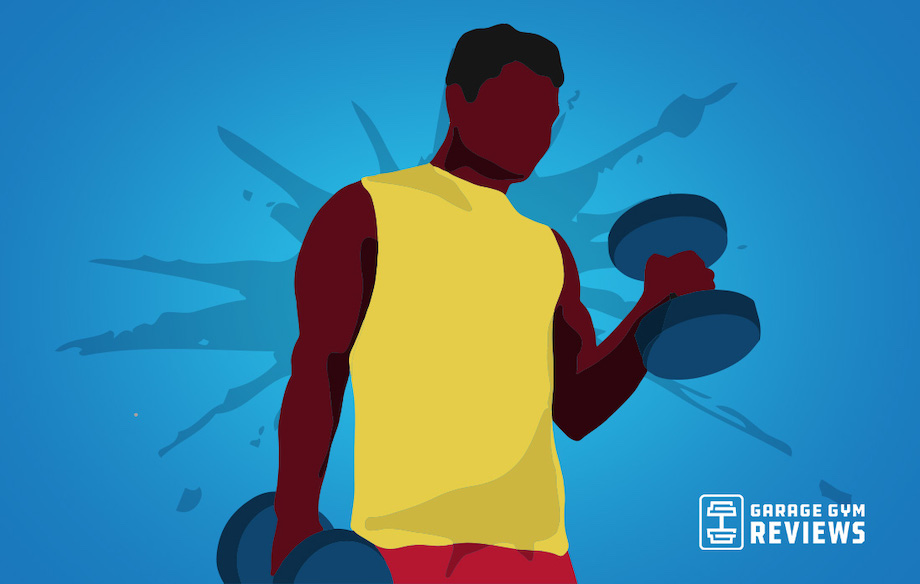We test and review fitness products based on an independent, multi-point methodology. If you use our links to purchase something, we may earn a commission. Read our disclosures.
I’ll be completely honest: It’s rare to see me doing bicep curls. I know, I know…I should, but I only sporadically add them into my routine. Much like my calves, these muscle groups get the tail end of my attention after all the complex and multi-joint movements are done.
But take it from me, a certified personal trainer (and a totally flawed human): We should not ignore our arms any longer—especially if you want stronger and bigger biceps.
Strong biceps not only enhance the big three lifts (squat, bench press, and deadlift), they also contribute to numerous strength training movements, especially pulling movements like the dumbbell row, bent over row, or a pull-up.
The biceps (technically called the biceps brachii) are made up of two muscle heads that join together to form a single muscle belly before it attaches to the forearm. The biceps brachii have a short head and long head and the main job of the biceps is to bring the elbow into flexion and rotate1 the forearm outward.
In basic terms, the biceps function is to bend your elbow and twist the forearm and wrist. For stronger biceps, keep reading for a step-by-step guide on hammer curls and the benefits of this curl variation.
How to Perform A Dumbbell Hammer Curl
The dumbbell hammer curl is pretty straightforward and accessible for most folks ranging from beginners to highly trained individuals. Start by choosing a pair of dumbbells you feel comfortable to handle for two to three sets of 10 repetitions (it’s always safer to go lighter and ease your way to more weight).
In your starting position, your feet will be about shoulder-width apart with your shoulders relaxed. You’ll have a dumbbell in each hand and your hands down at your sides. From there, turn your palms toward your thighs so your hands are in the neutral position.
This neutral position puts more emphasis on the brachialis and the brachioradialis while a traditional supinated position (aka palms up) stresses primarily the biceps brachii2. We’ll get into the details of those muscles later.
For now, you’re ready to get started on a hammer curl:
- With the strength of your biceps, bend at the elbow and keep shoulders relaxed and away from ears.
- Bring your forearms past parallel and bend the elbow as much as you can, bringing the dumbbells toward the shoulder joint.
- Keep your palms in the neutral position as you complete the range of motion.
- At the top of the movement, hold briefly before lowering the dumbbells back to the starting position—keeping neutral palms the entire time.
- Once your arms straighten, it’s time to repeat for reps.
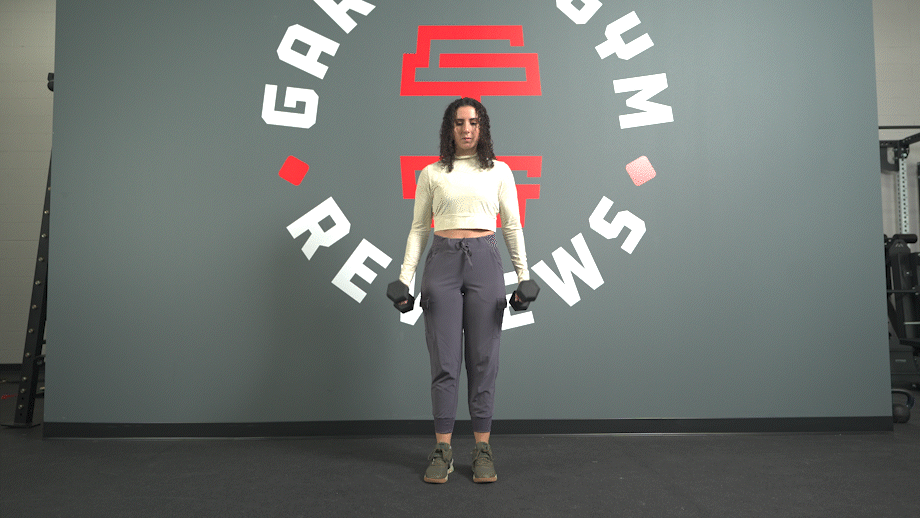
It’s worth mentioning that everyone’s range of motion is going to look different—but generally speaking, you’ll want to bring the dumbbells as high as you can without the elbow floating away from your body.
Benefits of Hammer Curls
If you’re wondering why you should turn your hands to the neutral position and what the benefit is, let me break that down for you.
Firstly, a neutral grip position tends to be easier on the wrists than a traditional supinated grip. For anyone with wrist issues, this slight position change can be a major difference.
Additionally, both the long head of the bicep and the short head of the bicep are still activated regardless of your preferred grip. However, hammer curls recruit two other muscles that influence overall arm strength: the brachioradialis and brachialis muscles.
Both of these arm muscles are superficial, which means they are fairly close to the surface of the skin. Because of this, working hammer curl reps into your arm workout can not only help build muscle and strength, but lead to bigger arms.
The brachioradialis muscle is mainly located in the lower arm but attaches to the humerus in the upper part of your arm. The brachioradialis3 contributes to the muscle mass on the outside of your forearm, while its main function is to flex the elbow and rotate the forearm in both directions.
The brachialis on the other hand is not responsible for rotation but it is one of the largest elbow flexors you have in your arm. The head of the muscle attaches to the lower part of your arm while the smaller head attaches to the humerus and lies under the biceps. The brachialis initiates activation at the start of elbow-bending movements and is the strongest flexor4 of the elbow.
Trainer Tips for Proper Form
In the case of the hammer curl, you’ll want to direct your mental attention to your upper arms and the biceps so other muscles in your upper body don’t try to overcompensate for the work your arms are doing. It’s important to focus on the muscles that are designed to bend the elbow joint, not the shoulders or back.
Avoid Shrugging
You’ll want to avoid shrugging your shoulders up by your ears while you perform hammer curls. Oftentimes choosing a lighter weight can help this common fault, however you’ll also want to be sure you start with your shoulders relaxed.
Keep Elbows Stationary
It’s easy to have your elbows float away from your body and move with the flow of the up-and-down motion of the curl. However, you’ll want to keep your elbow as stable as possible so your biceps stay accountable for flexing the elbow and bringing the forearm to meet the upper arm.
Watch Your Grip
If you’re having a hard time engaging your biceps or targeting the mind-muscle connection, you can try either gripping a little tighter with your pinky fingers or loosening your grip entirely. I’ve seen a lot of clients white-knuckle exercises to the point where forearms are overcompensating for that entire movement.
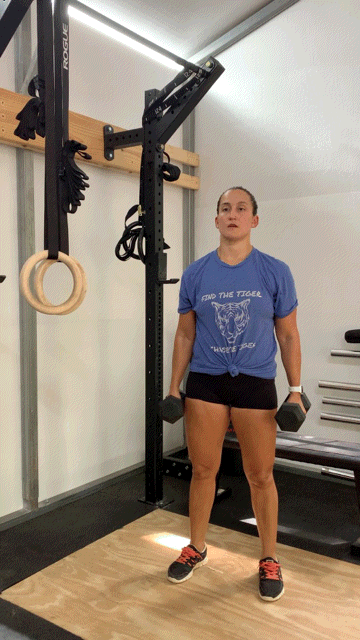
Common Hammer Curl Mistakes
In the world of strength and conditioning, everyone has been a beginner at some point. Practice makes perfect, and everyone (even elite athletes) has room for improvement—don’t be afraid to try new exercises. That said, if your hammer curls just don’t feel right, here are some common mistakes to avoid:
Too Much Body Language
What do I mean by body language? All I’m really alluding to is the moment where you want to get momentum from the rest of your body to complete a set of curls. It’s important to isolate the biceps and choose a weight that does not require a whole lot of glute tightening, shoulder shrugging, and overall body wiggling to complete your reps.
Too Much Speed
Honestly, if your fitness goals have anything to do with body composition or muscle growth (and you’re not training specifically for speed or Olympic weightlifting) there is no need to rush on the concentric or eccentric portions of the curl. Like I mentioned earlier, you’ll want to sense the feeling of the muscles activating, which gets harder to do when rushing through a movement.
Involving the Deltoids
Shrugging the shoulders is a common mistake when either the weight is too heavy or when traps and deltoids attempt to overcompensate the hammer curl movement. If you notice this is happening, you might have to use extra muscular effort to shrug your scapula down as if you were putting them into your back pockets. This takes more effort, but can be helpful for anyone with overbearing traps.
Hammer Curl Variations
One thing I love about training the upper body is the fact there are quite a few variations for the biceps (and triceps for that matter) to incorporate into your upper body workout. So if you’re anything like me and you struggle to enjoy bicep exercises, there are enough variations out there to find one you can tolerate.
Perhaps cable machine curls are more fun than using dumbbells. Here are some other variations you can try:
Alternating Hammer Curl
This is a simple variation where you’ll set up for a traditional dumbbell hammer curl. With a dumbbell in each hand, bend only one elbow at a time while the other arm is straight and at rest.
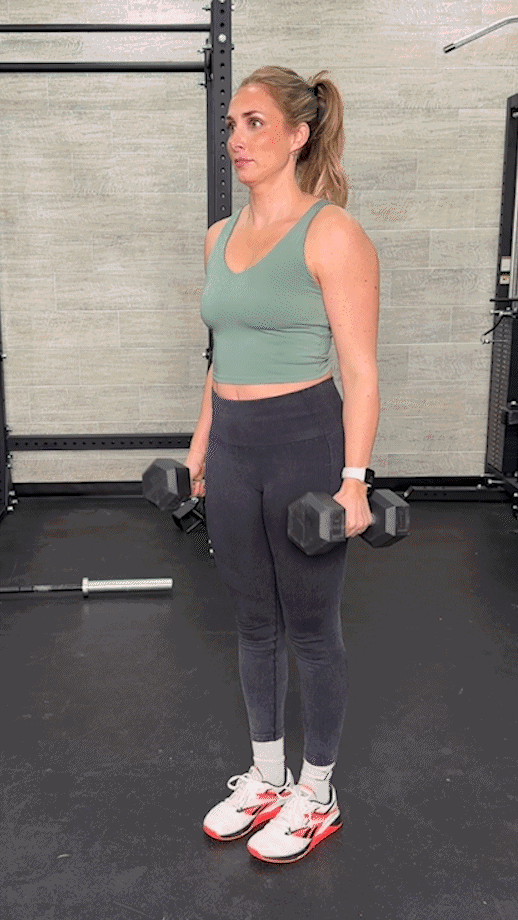
Seated Incline Hammer Curl
The seated dumbbell hammer curl on an incline bench might be my favorite variation. You’ll set up an adjustable bench around 75 to 85 degrees (nearly all the way inclined) and sit down with your back on the back pad and a dumbbell in each hand. You’ll perform a traditional hammer curl range of motion and bring the weights all the way down to a straight arm.
This variation allows a slightly larger range of motion because the relaxed position at the bottom range is typically just past your rib cage.
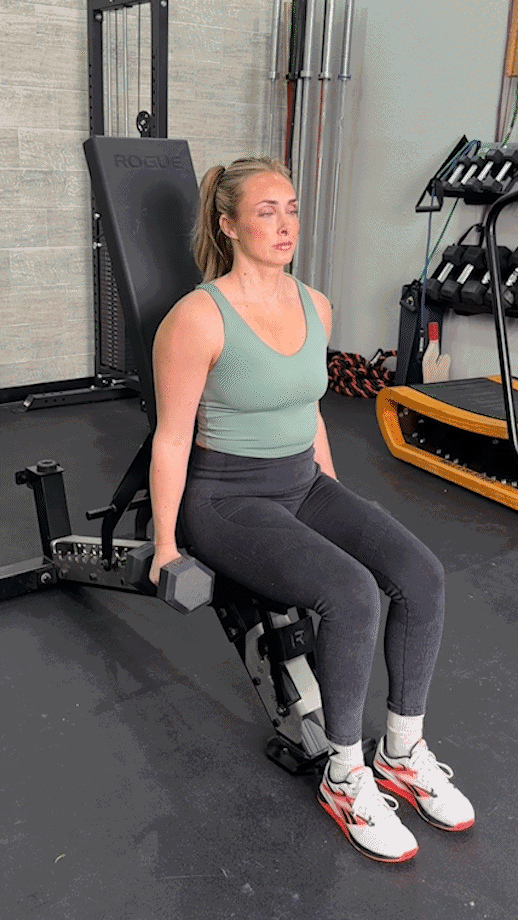
Cable Rope Attachment Hammer Curl
On a functional trainer cable machine, use a rope attachment on the lowest setting. Grab the rope attachment so that your thumb and pointer finger are touching the plastic stoppers on the end of the ropes. Make sure you keep your palms facing one another to remain in the neutral-grip position of the hammer curl through the entire range of motion.
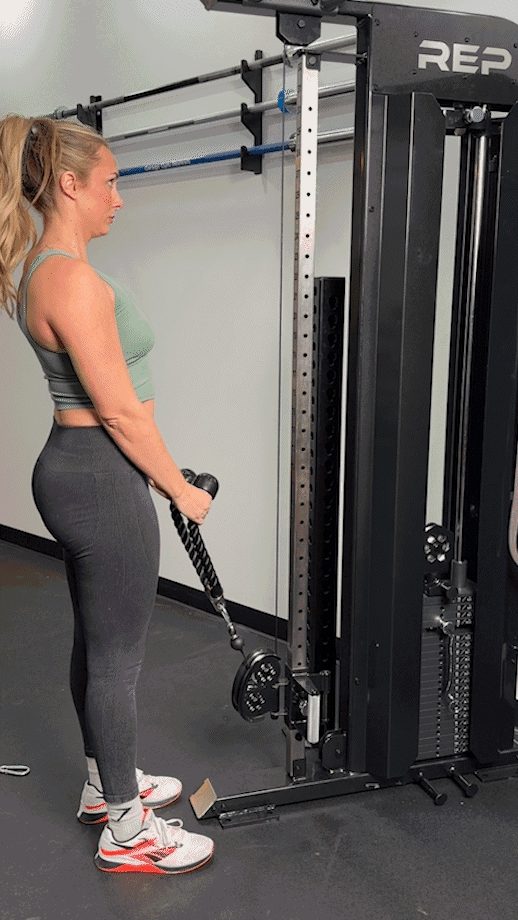
Kettlebell Hammer Curl
For a kettlebell hammer curl, instead of grabbing the handle of the kettlebell, grab each hand around the horns of the kettlebell. This gripping position naturally puts your palms in a neutral position, but you’ll want to make sure you’re not shrugging your shoulders because this position can also internally rotate the shoulders for bigger folks.
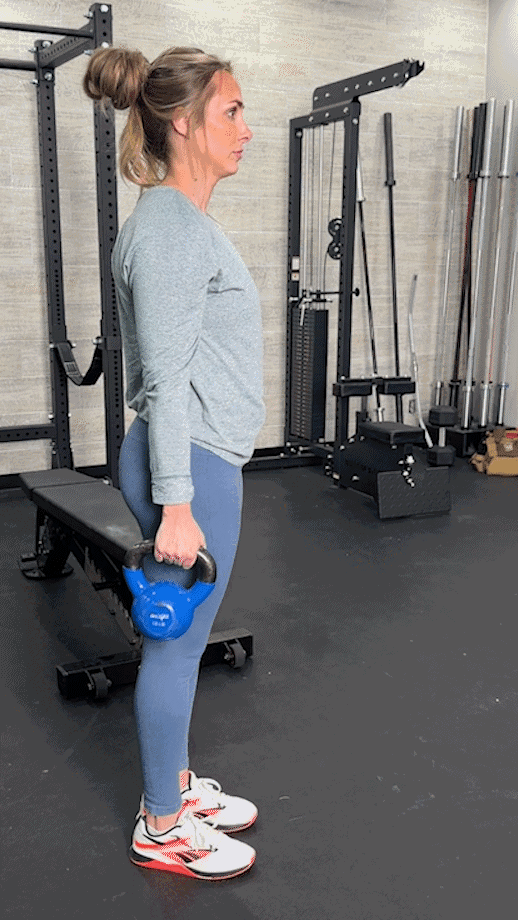
How to Do Hammer Curls: FAQs
What muscles do hammer curls work?
Hammer curls work the biceps brachii, in addition to the brachioradialis and brachialis muscles, which help with assist elbow flexion.
Is hammer curl better than bicep curl?
Both curl variations are helpful for overall arm strength and size. One is not inherently better than the other, but the hammer curl targets different muscles because the palms are not supinated (face up).
What is the proper way to do hammer curls?
The proper way to perform a hammer curl is by bending at the elbow with your palms facing each other, shoulders relaxed, and elbows stationary at your sides.
References
- Tiwana MS, Charlick M, Varacallo M. Anatomy, Shoulder and Upper Limb, Biceps Muscle. [Updated 2022 Aug 30]. In: StatPearls [Internet]. Treasure Island (FL): StatPearls Publishing; 2022 Jan-.
- Naito A, Yajima M, Fukamachi H, Ushikoshi K, Sun YJ, Shimizu Y. Electromyographic (EMG) study of the elbow flexors during supination and pronation of the forearm. Tohoku J Exp Med. 1995;175(4):285-288. doi:10.1620/tjem.175.285
- Lung BE, Ekblad J, Bisogno M. Anatomy, Shoulder and Upper Limb, Forearm Brachioradialis Muscle. [Updated 2022 Jul 25]. In: StatPearls [Internet]. Treasure Island (FL): StatPearls Publishing; 2022 Jan-.
- Plantz MA, Bordoni B. Anatomy, Shoulder and Upper Limb, Brachialis Muscle. [Updated 2022 Feb 22]. In: StatPearls [Internet]. Treasure Island (FL): StatPearls Publishing; 2022 Jan-.
Further reading

Considering a vegan diet? There are many plant-based protein powder benefits, such as ease of digestion, lowered environmental impact, and more! Read more

Regardless of the holiday or occasion, if you have a gym-going friend that enjoys lifting weights, here is our guide to the best gifts for bodybuilders. Read more

There may be no TrueForm discount code out there, but that doesn’t mean you can’t save money on one of the best treadmills. Read more

Whether you’re a beginner or more advanced, how often you should run depends on several factors. Read on for more. Read more

